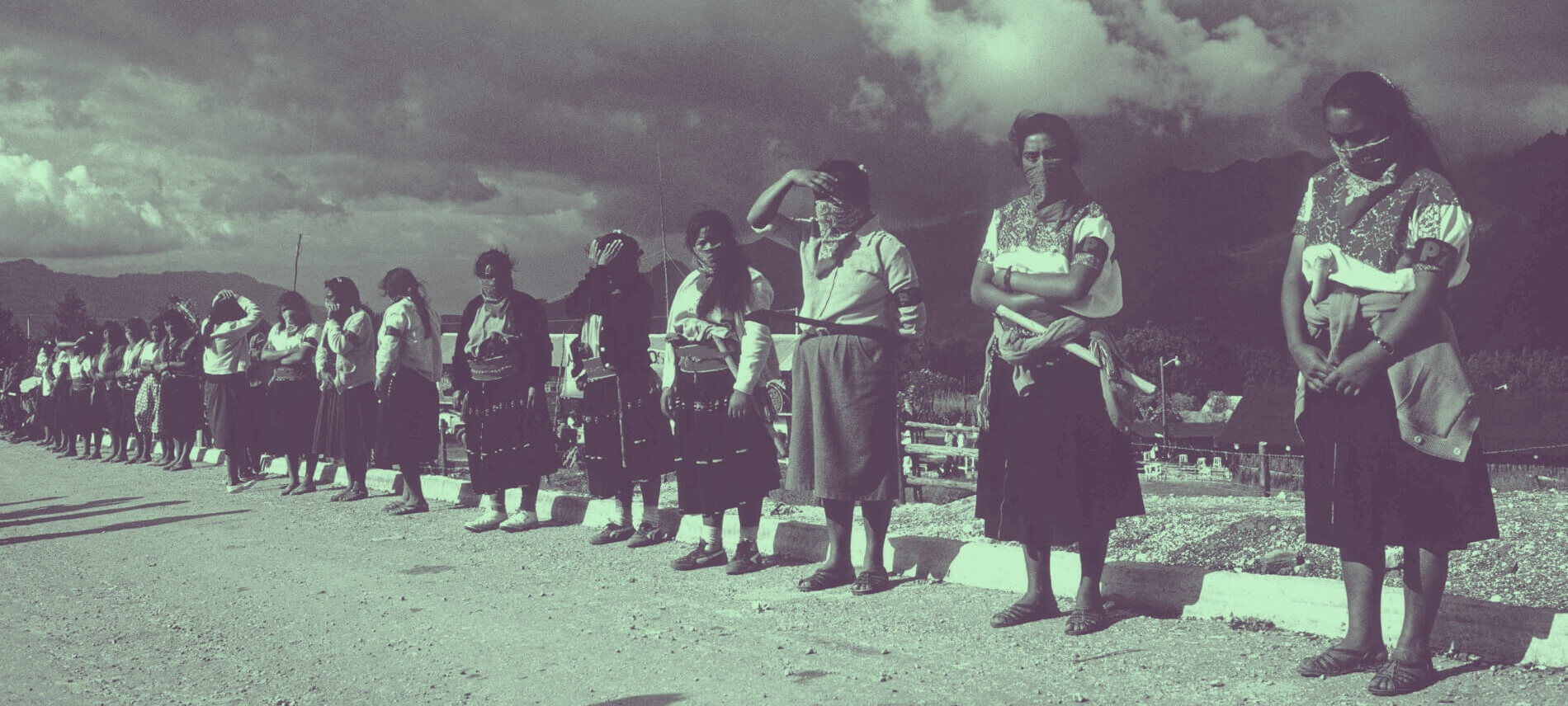
The Indigenous Rights Report is a weekly crash course on everything in the indigenous world.
Make this podcast happen! Support us on Patreon!
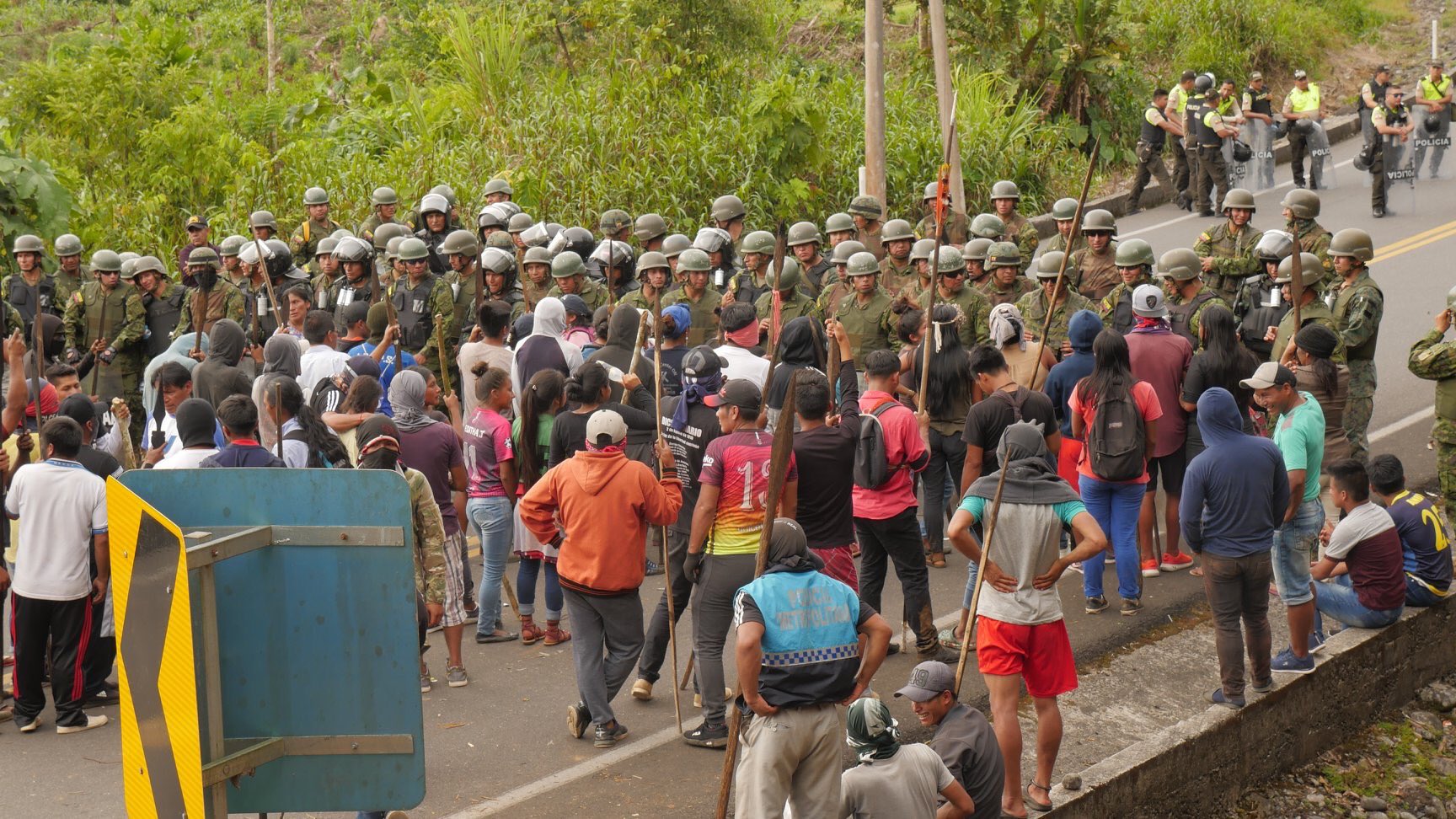
This is the Indigenous Rights Report for the week of October 5, 2019. In this week’s report:
- 31 Alaska Native Nations sue EPA to block Pebble mine
- Wisconsin tribe turns down $24M, says ‘remove Line 5’ pipeline
- Oil company permanently retires 7,600-acre lease in Badger-Two Medicine
- A new bill could help protect sacred seeds in the US
- Indigenous groups call on Cambodia for speedy registration of collective land
- Conservation policies threaten Indigenous reindeer herders in Mongolia
- B.C. First Nation chiefs demand stop-work order against CGL pipeline
- Ngorongoro Chief Conservator announces a plan to evict the Maasai again
- Dozens of Indigenous women occupy Argentina Public Ministry to demand respect
- Hawaii state commits to remove five telescopes on Mauna Kea
- Navajo, Hopi will have objects, human remains repatriated by Finland
- Heavy rains have brought the catastrophic Bolivian fires under control
- Navajo artist creates ‘Make America Native Again’ hats to critique Donald Trump’s campaign slogan
- As the DOE abandons a toxic mess threatening the Columbia River, the Yakama Nation fights back
- Mining, mercury and murder continue to plague Colombia’s Atrato
- Ecuador’s streets rumble with Indigenous wrath
- Shakopee Sioux announce $5 million campaign to boost Indian education in Minnesota schools
- Website provides blueprint for repatriating Aboriginal remains
A coalition of 31 Bristol Bay, Alaska Native nations as well as regional fishing and conservation organizations who are also resisting the proposed Pebble Mine, sued the U.S. Environmental Protection Agency (EPA) over the agency’s decision to withdraw its own preemptive veto of the proposed Pebble Mine in July. The EPA’s Obama era preemptive veto was based on the agency’s three-year peer-reviewed study on the proposed Pebble Mine, called the Bristol Bay Water Assessment, which found that the mine would lead to an “irreversible” and “total loss of fish habitat.”
The Pebble Mine would be the largest gold mine in the world, according to Science magazine. Canadian mining company Northern Dynasty plans to excavate what would likely become the largest open-pit mine in North America among the headwaters of the Bristol Bay watershed.
A tribe in Northern Wisconsin still wants Line 5 off their land, despite a $24 million offer from Enbridge. The Bad River Band of Lake Superior Chippewa sued Enbridge Energy earlier this year, asking them to immediately shut down the portion of the Line 5 oil pipeline that runs through their reservation. The tribe says easements allowing Enbridge to operate the pipeline have expired. The company disputes that.
A section of Line 5 runs beneath the Straits of Mackinac. Tribes in that area have also called for the pipeline to be shut down, and the State of Michigan is currently suing Enbridge for the same.
The Wilderness Society announced it had reached an out-of-court settlement with Moncrief Oil to permanently retire a 7,640-acre oil and gas lease in the Badger-Two Medicine area of the Lewis and Clark National Forest. That leaves one 6,200-acre lease owned by Solonex LLC still in play.
The sale in the 1980s of oil and gas leases in the 132,000-acre Badger-Two Medicine area led to decades of legal wrangling and political manipulation as the Blackfeet tribe and conservation groups struggled to keep oil and gas out of the wild region between the Bob Marshall Wilderness Complex and Glacier National Park.
Newly proposed legislation, The Native American Seeds Protection Act of 2019, would direct the Government Accountability Office to study the long-term viability of Native seeds and the programs and laws that could safeguard them. The study would assess the cultivation, harvesting, storage, and commercialization of these ancient seeds, as well as investigate the fraudulent marketing of seeds as “traditional” or “produced by Native Americans.”
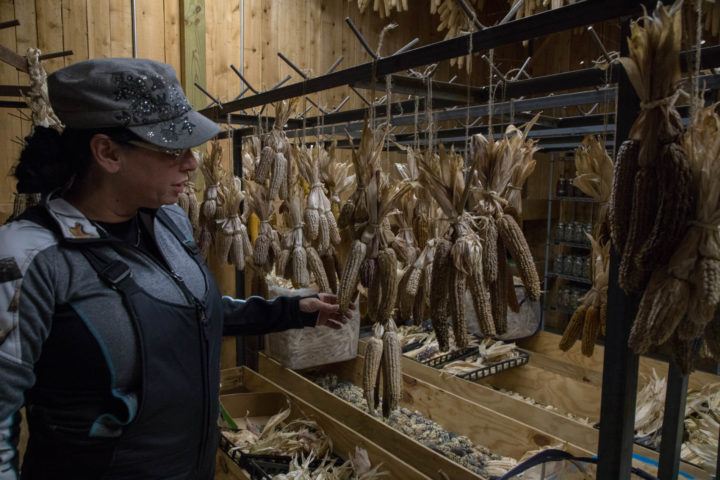
Angela Ferguson, a leader in the Onondaga Nation Farm Crew and Braiding the Sacred displaying some of the corn varieties they are reviving and propagating to feed to the people. Photo: Garet Bleir
Protecting traditional varieties is critical, said Brascoupé of the Traditional Native American Farmers Association, not just because of their cultural and spiritual significance. They’re nutritionally superior and can help fight the epidemic of obesity in Indian Country and across the U.S.
Representatives of 24 Indigenous groups from 15 provinces in Cambodia urged the government to solve their outstanding land dispute and expedite the process of registering their collective farmland to prevent private companies from grabbing it. Tep Toem, one of the representatives, said Indigenous communities are most concerned about land grab and forest clearance by companies that have received economic land concessions. She said such encroachment has cost them livelihood, shelters and traditions, among others.
According to a report from the Ministry of Rural Development, there are 24 groups of ethnic minorities throughout the Kingdom, accounting for 1.34 per cent of the whole Cambodian population.
The Tsaatan, the last reindeer herding nomads in Mongolia, are facing the dangers of the government’s conservation policies. In 2011, the Mongolian government set up a Special Protected Area and canceled all 44 mining licenses in the region. But the government also went further: concerned by poaching and habitat loss, it eliminated hunting and fishing as well, and excluded reindeer from most of the area.
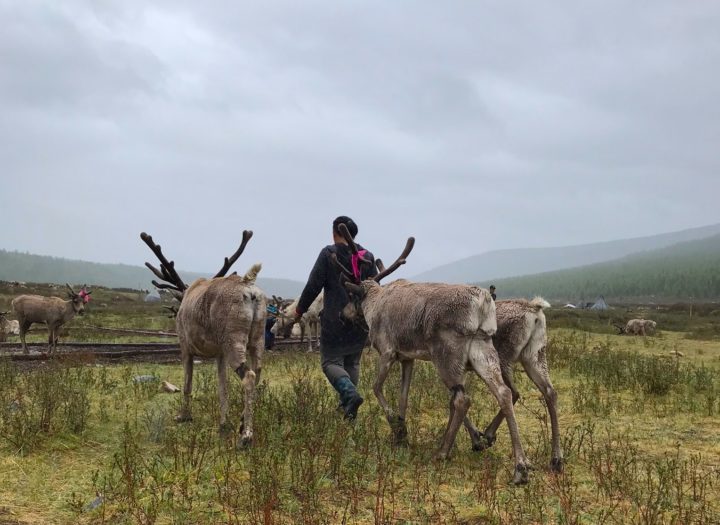
Rules put into place to protect endangered species have harmed people who depend on nature. Nancy Langston, CC BY-SA
The Mongolian government is working hard to protect endangered wildlife, but the Tsaatan nomads insist their reindeer culture is equally endangered – and important. If consulted as equals, they and their reindeer can help sustain the boreal forest and the global climate.
The Office of the Wet’suwet’en is demanding a stop work order be issued to Coastal GasLink (CGL) by Forests minister Doug Donaldson. “The Wet’suwet’en Hereditary Chiefs demand that a cease-and-desist order be immediately issued to the CGL pipeline project due to the ongoing destruction of Wet’suwet’en cultural heritage and archaeological sites, and non-compliance with Wet’suwet’en and BC Provincial law,” stated a press release.
Currently, the Province is in talks with the Office of the Wet’suwet’en to try to begin a reconciliation process between the two parties, however Na’Moks said there are a number of ground rules they made clear before going to the table with the government.
The Tanzanian government, at the behest of the United Nations Educational, Scientific and Cultural Organization (UNESCO) and international conservation organizations, has announced a plan to divide the Ngorongoro Conservation Area (NCA) into four distinctive zones —further marginalizing land rights of Indigenous communities living there. The new plan threatens approximately 90,000 livelihoods with the creation of new restricted areas within the NCA, where the Maasai are denied access for housing, livestock grazing, and crop cultivation.
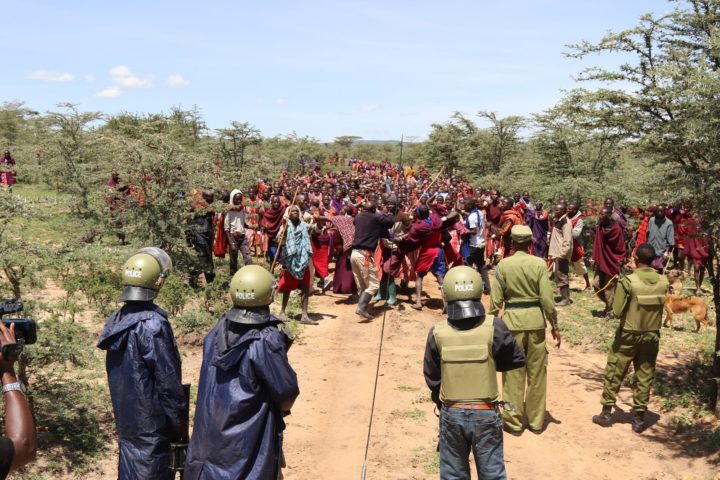
Photo from an eviction of Maasai in Loliondo. Photo: tourismobserver.com
The Tanzanian government’s proposed plan builds on the history of continued dispossession of the Maasai in the country. Over the past century, numerous land laws—passed first by the British colonial government and then by the Tanzanian government, often with the support and backing of international conservation groups—have forced the Maasai onto smaller and smaller plots of land, stifling their livelihoods and threatening their very existence.
Indigenous women in Argentina have stood up to say ‘enough’ to terricide. After occupying a government building last week, the women issued a statement explaining their protest. “We accuse the governments and companies that are killing our territories of terricide. We call terricide the murder not only of the tangible ecosystems and the peoples that inhabit it, but also the murder of all the forces that regulate life on Earth, what we call a perceptible ecosystem,” The women stated.
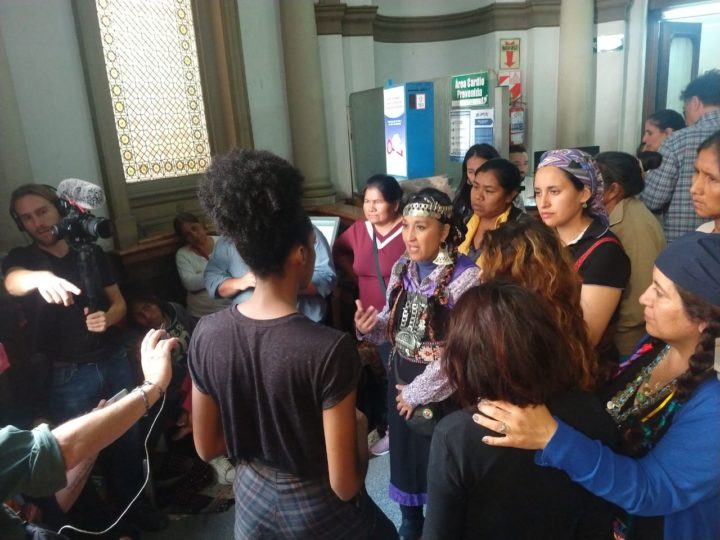
Photo: Moira Millan
They went on to say that in Argentina today, eight out of ten Indigenous women suffer rape, abuse and physical violence. Seven out of ten suffer from police and state security forces. Of every eight women, seven cannot access justice. Five out of eight women who are raped or killed are elders, in most cases spiritual authorities.
Five telescopes on Mauna Kea are set to be decommissioned in order to resolve the protest build the Thirty-Meter Telescope (TMT). But most of these telescopes are still operating and even TMT opponents see the value of keeping them online until their lease expires.
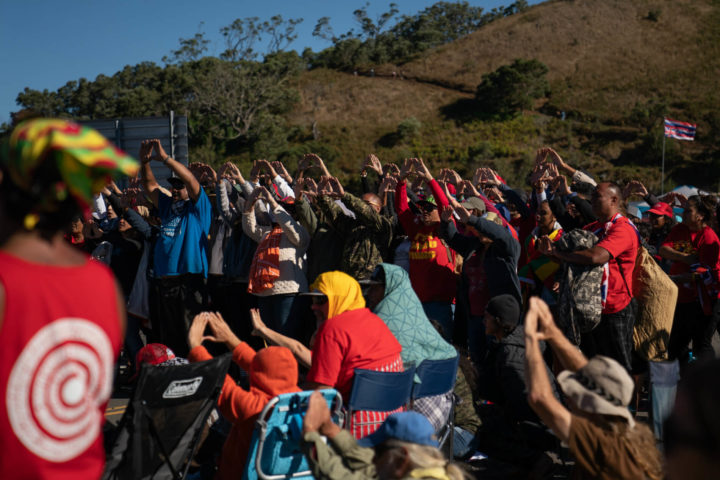
Mauna Kea protectors stand in solidarity for the Mauna during a daily protocol meeting. Photo: Danielle Da Silva
“We have never advocated for the removal of telescopes because the removal of telescopes creates a whole other level of problems,” said TMT opponent Kealoha Pisciotta. But, she said, the idea of “swapping, you know, telescopes that are the size of a large kitchen into something that that’s bigger than a football field” is unreasonable. She also added that, at some point at the end of the lease, they want everything off. The current master lease held by the university allows the telescopes to operate on Mauna Kea until 2033. All telescopes on the mountain will need to be removed by then if no new lease is negotiated.
The Hopi and Navajo are among 26 tribes that will see the return of ancestral remains from Finland, where the items have been held in a museum after being taken from Colorado almost 130 years ago. They include more than 600 items of ancestral remains and objects taken from an area that is now part of Mesa Verde National Park.
Tribal leaders welcomed the return of these items, but lamented that much work remains to be done to recover items from other countries.
Heavy rains over recent days in the Bolivian Amazon have helped put out the forest fires that have raged for two months across Bolivia, charring more than 4m hectares of land, local authorities said. The storms helped Bolivia’s military contain blazes in the region of Chiquitania, home to large areas of dry forests and Indigenous communities that have lived in them for centuries.
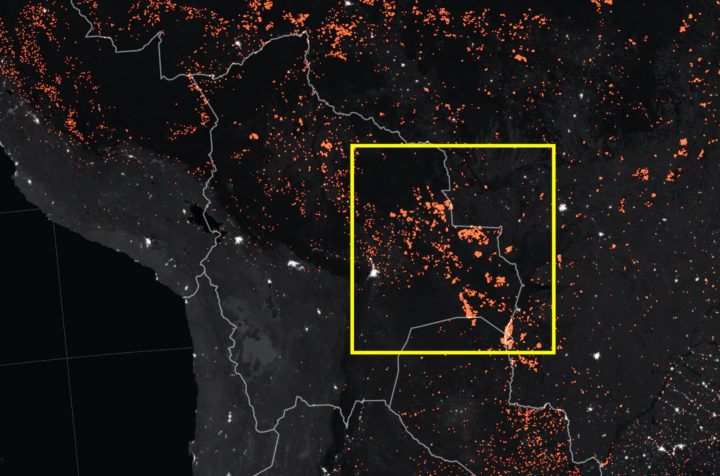
At least 2.5 million hectares have burned in Chiquitania
Armed forces commander Williams Kaliman said there was no immediate plan to withdraw about 5,000 troops that had been sent to battle the worst fires Bolivia has had over the last two decades. Critics say deforestation, caused by the government’s policy of increasing farming, is to blame for the disaster.
A Navajo artist created ‘Make America Native Again’ hats to critique Donald Trump’s campaign slogan. Vanessa Bowen said she has designed and produced “Make America Native Again” hats as a way of starting the conversation about the problematic history behind Donald Trump’s presidential campaign slogan — “Make America Great Again” — and to raise awareness for marginalized Indigenous peoples in the U.S.
Bowen explained that “Make America Native Again” means learning and respecting Native American values and culture that have been largely erased and disrespected by colonialism.
The U.S. Department of Energy (DOE) wants to dodge its cleanup duties by reclassifying the nuclear waste contamination site along Washington’s Columbia River. Not only is it a reckless move, but it may violate treaty-protected Indigenous rights, according to the Yakama nation.

Plume from Nuclear Power Plant on Hanford Reservation as seen from south. Photograph taken by TobinFricke
Dan Serres, conservation director of Columbia Riverkeeper, calls it “Orwellian.” “If you’re in a marathon at mile three, you can’t just stop the race and say, ‘I won’ by moving the finish line,” he says. “Sure, the race is over much faster if you move the endpoint, and it costs a lot less.” Essentially, this is what the DOE is doing. “Cleanup needs to occur, and to Yakama Nation standards,” says Alfrieda Peters, the education and outreach specialist for the Yakama Nation Environmental Restoration and Waste Management (ERWM) Department. “The Yakamas lived here before it was Washington or before it was Oregon Territory. We still have rights there, [and] the U.S. has an obligation to protect and preserve them.”
Decades of internal conflict have fueled an unprecedented surge in illegal mining in Colombia’s Choco region, decimating the Atrato River basin and provoking an environmental and humanitarian crisis. In a landmark ruling in 2016, Colombia’s Constitutional Court granted the Atrato environmental personhood rights just as the country signed historic peace accords, but three years on a new era of conflict is plaguing the Choco region.
Choco is home to one of the most diverse ecosystems in the world, with an estimated 54,850 animal species living in its dense jungle. But open-pit mining operations and large-scale deforestation are a constant threat. Mercury and cyanide contamination from industrial mining activities make it the most polluted river in Colombia and a clean-up operation promised back in 2016 has yet to materialize.
Indigenous peoples are at the heart of the biggest protests that Ecuador has seen in over a decade. The protesters are vowing to stay in the streets unless President Lenin Moreno repeals austerity measures linked to securing a $4.2 billion International Monetary Fund loan. Protests that started a week ago burgeoned into a massive nationwide strike on Wednesday, October 9, with workers unions joining several thousand Indigenous peoples in the highland capital as many more rallied around the provinces.
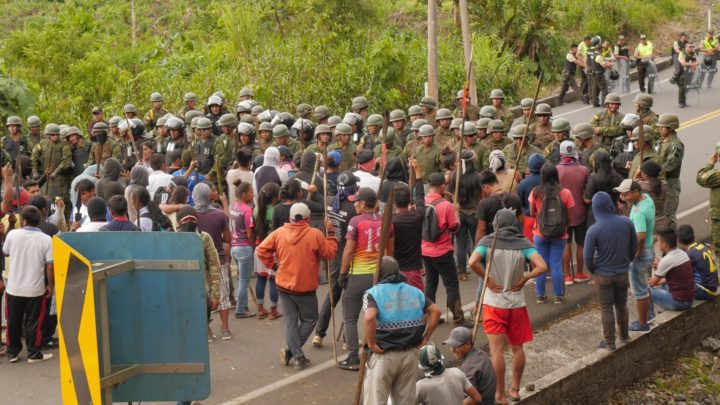
Photo: @confeniae1
But what started as a concrete demand to reinstate fuel subsidies has turned into wider protests with many calling for Moreno to step down. Indigenous protests have been key detonators in pushing previous presidents from office.
Rebecca Crooks-Stratton, the secretary-treasurer of the Shakopee Mdewakanton Sioux Community (SMSC) based in Prior Lake, announced a three-year initiative, Understand Native Minnesota, at the National Indian Education Association’s conference held in Minneapolis. The new $5 million philanthropic campaign by the SMSC aims to change that narrative by funding resources, curriculum and training for teachers and school administrators across the state. She said that new curriculum and resources could widen the narrow lens of tribal history and culture taught in most schools, improve public attitudes about American Indians and be replicated in other states.
There’s a movement nationwide to boost education of Indian history and culture. A report released by the National Congress of American Indians found that Minnesota lacks access to curriculum on Native Americans. The report says that 90% of states surveyed have efforts underway to improve the quality of Indian curriculum and access to it, but fewer states require it to be taught in public schools.
A new website called Return, Reconcile, Renew (RRR), funded by the Australian Research Council and project partner organizations, illuminates the historic and ongoing implications of stealing ancestral remains from Aboriginal communities, provides a virtual space for support and healing, and also offers a roadmap to help Aboriginal communities successfully secure the return of stolen ancestral remains. RRR, named after the international project of the same name founded in 2013, “seeks to raise public awareness about the importance of repatriation, assist repatriation practitioners and researchers in Australia, New Zealand and the USA, and support local management of private repatriation-related information by, at present, three Australian community organizations: The Kimberley Aboriginal Law and Culture Centre (KALACC), Gur a Baradharaw Kod Torres Strait Sea and Land Council (GBK) and the Ngarrindjeri Regional Authority.”
The project website is just one of the methods helping to identify Ancestral remains and their origins, and ensure their return. The Australian government funds many of these efforts, notably the Australian Institute of Aboriginal and Torres Strait Islander Studies. These projects continue the fight for the repatriation of Ancestral remains and cultural objects that gained momentum thanks to Indigenous activists in the 1970s.

Indigenous Peoples are putting their bodies on the line and it's our responsibility to make sure you know why. That takes time, expertise and resources - and we're up against a constant tide of misinformation and distorted coverage. By supporting IC you're empowering the kind of journalism we need, at the moment we need it most.